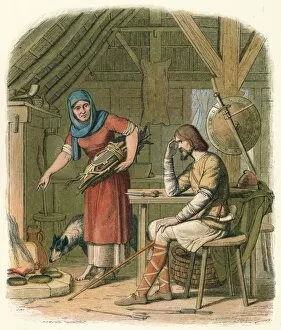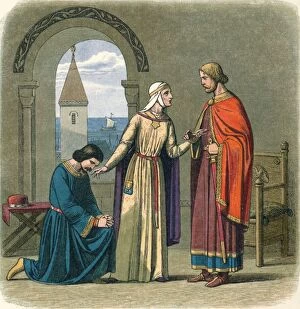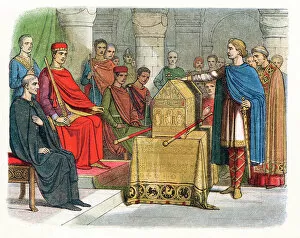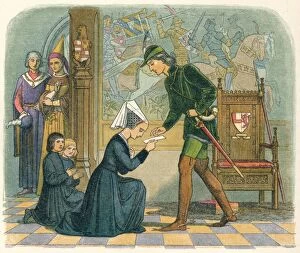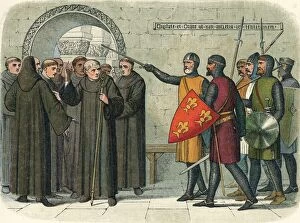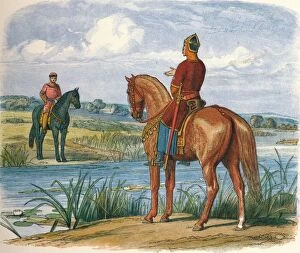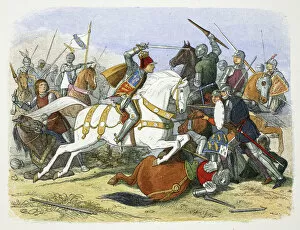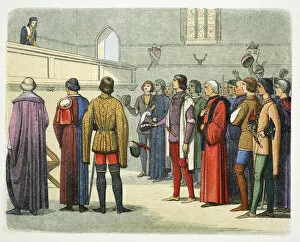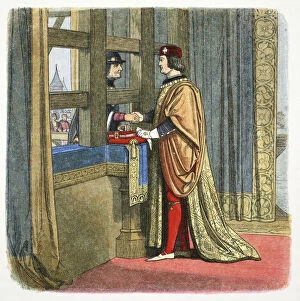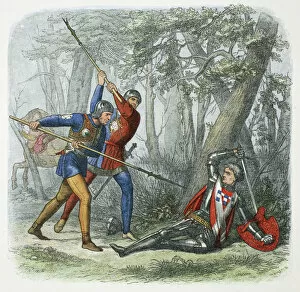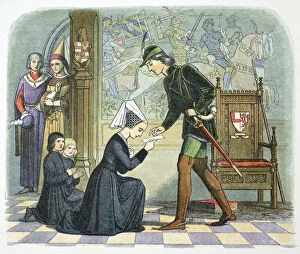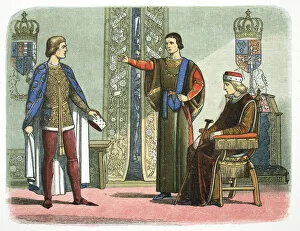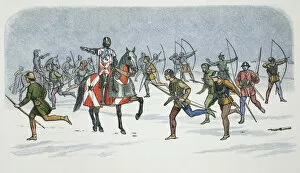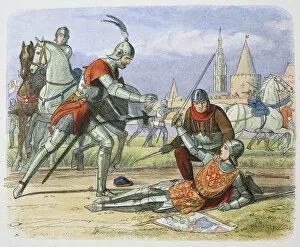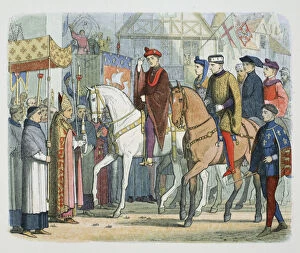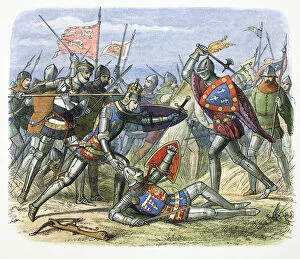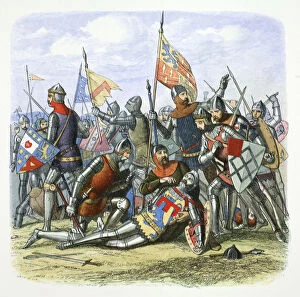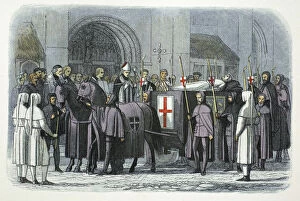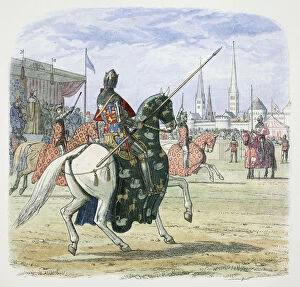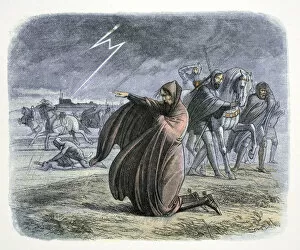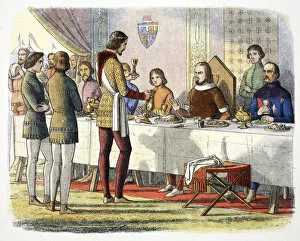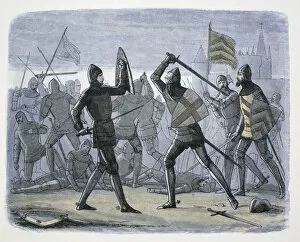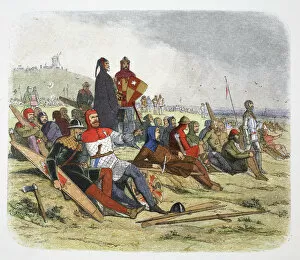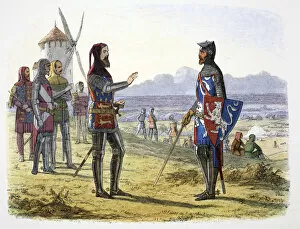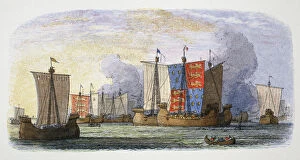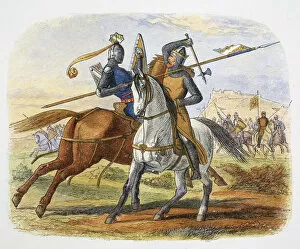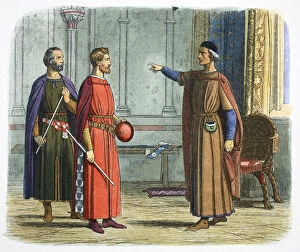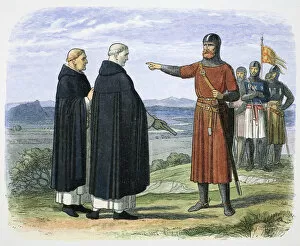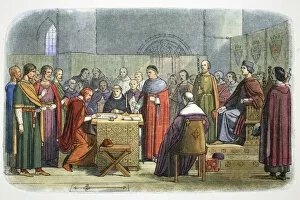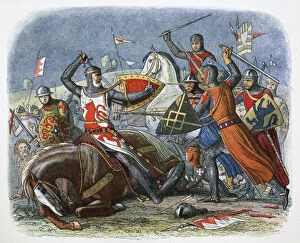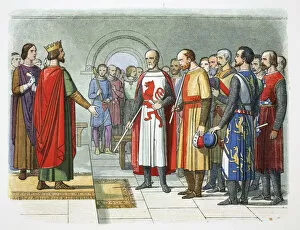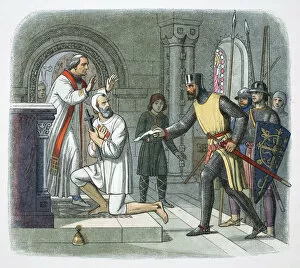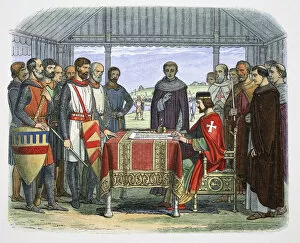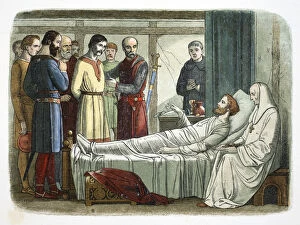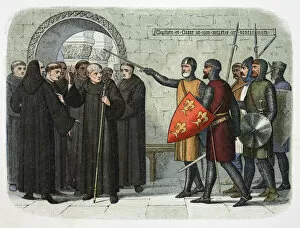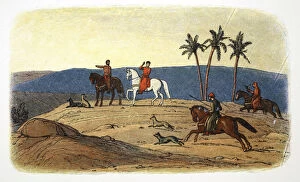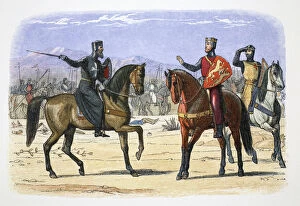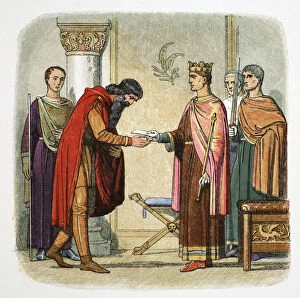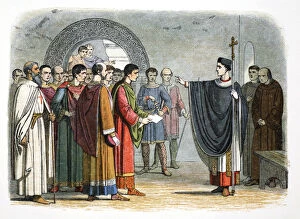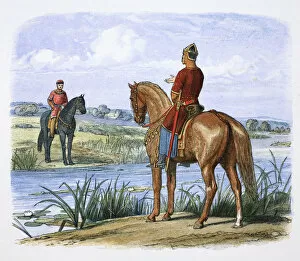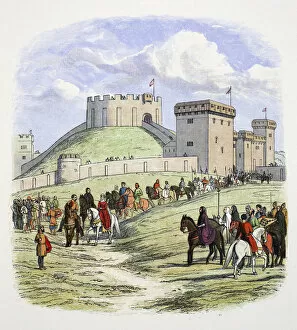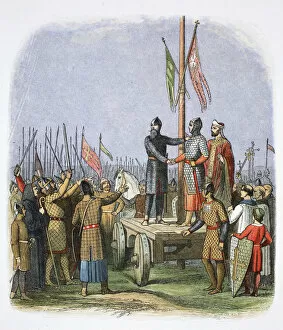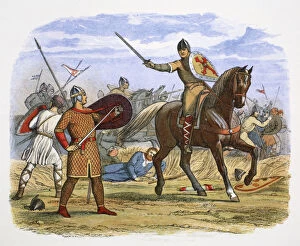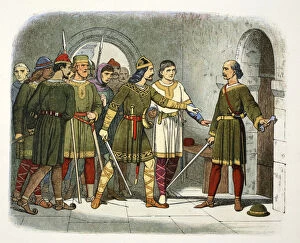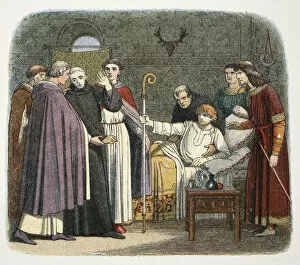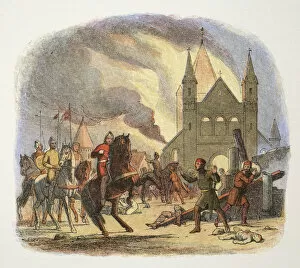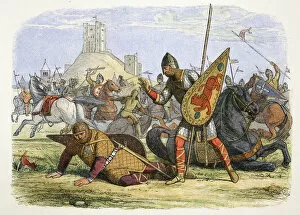James William Edmund Collection
James William Edmund Doyle was a talented artist who captured historical moments with great skill and detail
All Professionally Made to Order for Quick Shipping
James William Edmund Doyle was a talented artist who captured historical moments with great skill and detail. In his painting "Edward refuses succour to his son at Crecy, 1346, " he portrays the heart-wrenching scene of a father denying aid to his wounded son during battle. Doyle's ability to convey raw emotion is evident in this powerful piece. Another notable work by Doyle is "Alfred in the neatherds cottage, c878. " This painting depicts King Alfred seeking refuge in a humble cottage, showcasing the contrast between royalty and common folk. Through his meticulous brushstrokes, Doyle transports us back to a pivotal moment in history. Doyle's talent for capturing significant events extends further with "Richard pardons his brother John, 12th Century. " Here we witness an act of forgiveness between siblings amidst political turmoil. The artist's attention to detail allows us to immerse ourselves in this historic reconciliation. In "Harold II, last Anglo-Saxon king of England, " Doyle brings forth the image of a noble ruler facing impending doom. The intensity on Harold's face reflects the weight of responsibility he carries as he confronts challenges that ultimately lead to his demise. "Edward IV and Lady Elizabeth Grey" showcases another aspect of Doyle's expertise - portraying intimate moments within royal circles. This painting captures the love between Edward IV and Lady Elizabeth Grey against a backdrop of political intrigue and power struggles. Doyle also delves into diplomatic encounters with "Meeting of Edward IV of England and Louis XI of France at Picquigny, France. " His portrayal highlights both regal grandeur and underlying tensions as two monarchs negotiate peace terms. The Battle scenes are not overlooked by Doyle either; one such example is "Richard III at the Battle of Bosworth Field. " With masterful strokes, he captures Richard III leading troops into battle while conveying the chaos and brutality that ensues on the battlefield.


